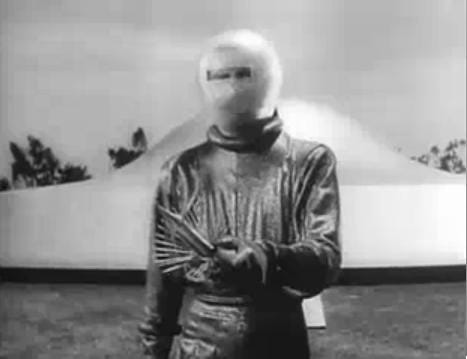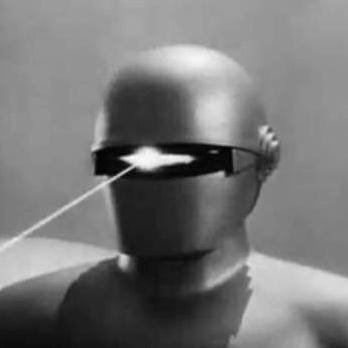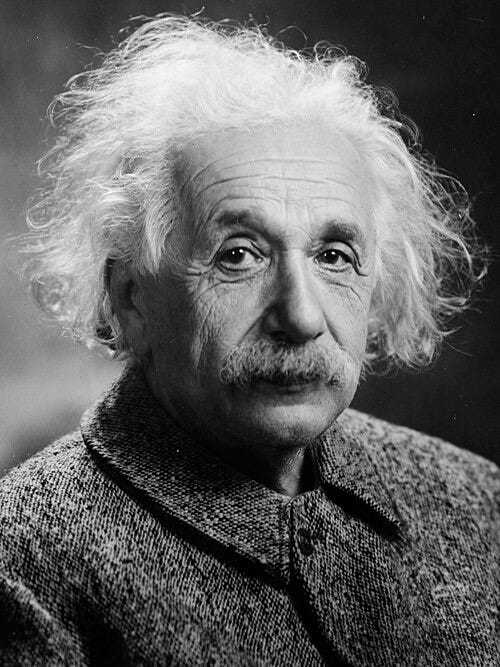This post is the third in my series About Cybernetics – What It Is & Why It Matters.
The previous posts are:
The Atomic Age & The Cold War
The horrific nuclear attacks on Hiroshima & Nagasaki in August 1945 made it very clear that we were in a different world. They heralded the Atomic Age and the Cold War between the newly dominant world powers of the USA and the Soviet Union.
The atmosphere of paranoia was well captured in 1950s science fiction movies such as The Day the Earth Stood Still:


The movie was released in the year I was born and I remember being gripped by it as a child when it appeared on TV. It is important to remember the phrase that saved the world from destruction “Klaatu barada nikto”!
At the end of the 19th century, distinguished physicists were discouraging youngsters from entering their field because “There is nothing new to be discovered in physics now. All that remains is more and more precise measurement.”.
Just how wrong they were began to reveal itself when an obscure patent examiner working in Bern, Switzerland published four scientific papers in 1905:
One of those papers introduced the mathematical formula:
which is the founding formula for the unleashing of atomic energy.
The fact that a few apparently obscure academic papers could lead to working atomic weapons only forty years later is extraordinary and was profoundly disorienting for a political elite many of whom had started their careers in the age of mounted cavalry charges.
The European Powers which had colonised great swathes of Africa and Asia had been bankrupted by the Second World War and were in retreat. India, the Jewel in the Crown of the British Empire had become independent in 1947. Soon other colonies would become independent nations, too.
In many respects, our modern world has still not caught up with these developments. Many highly influential academic disciplines which inform political policy today are still stuck in the Newtonian scientific paradigm that began to die at the dawn of the 20th century.
If you go to university today as an undergraduate to study finance, economics or business, most of what you will be taught is resolutely stuck in this 19th century paradigm. Every now and then, your teachers might mention systems thinking, but only as an amusing sideshow.
The 1950s was a period of paranoid conformism on both sides of the Iron Curtain, even though life was getting better for many of the people who had lived through the Second World War.
Norbert Wiener & The Military-Industrial Complex
The letter which follows was addressed by one of our ranking mathematicians to a research scientist of a great aircraft corporation, who had asked him for the technical account of a certain line of research he had conducted in the war. Professor Wiener’s indignation at being requested to participate in indiscriminate rearmament, less than two years after victory, is typical of many American scientists who served their country faithfully during the war.
— The Editor, Atlantic Magazine, January 1947
The above quotation precedes a letter written by Norbert Weiner headlined A Scientist Rebels.
As it points out, many American scientists who served their country faithfully to win the Second World War were appalled that they were expected to act as servants to a state which remained highly militarised after the decisive defeat of Nazi Germany and Japan.
They were deeply uncomfortable at the way the USA had decided that its war time ally the Soviet Union was now its greatest foe. They disapproved of the scientific method, which they saw as being in service of all mankind, being turned into a weapon in a Manichaean struggle between supposed goodies and baddies.
This remained a major concern for Wiener, leading to him writing a book called The Human Use of Human Beings:
Let us remember that the automatic machine, whatever we think of any feelings it may have or may not have, is the precise economic equivalent of slave labor. Any labor which competes with slave labor must accept the economic conditions of slave labor. It is perfectly clear that this will produce an unemployment situation, in comparison with which the present recession and even the depression of the thirties will seem a pleasant joke. This depression will ruin many industries—possibly even the industries which have taken advantage of the new potentialities. However, there is nothing in the industrial tradition which forbids an industrialist to make a sure and quick profit, and to get out before the crash touches him personally.
The Human Use of Human Beings by Norbert Wiener, 1950, 1954
His prediction of mass unemployment turned out to be wrong, but his concerns seem prescient 75 years later.
Wiener was objecting to the power in the USA of what would become known as the Military-Industrial Complex. The armed forces had been highly influential in the affairs of the USA at least as far back as the time of the Civil War in the 1860s. Many of the industrial innovations that would eventually make the USA a world power were devised to defeat the Confederacy in that war. But the scale of industrial power at the service of military objectives only grew greater in the two World Wars and continued on a massive scale at the time when Wiener was expressing his concerns.
At a time when the USA was the only possessor of nuclear weapons, it appeared intent on encircling the USSR with strategic bombers capable of delivering them against a defenceless enemy. That situation was brought to an end when the USSR detonated a nuclear bomb in 1949.
The term Military-Industrial Complex was not coined by a pacifist academic. It was first used in this speech:
In the councils of government, we must guard against the acquisition of unwarranted influence, whether sought or unsought, by the military-industrial complex. The potential for the disastrous rise of misplaced power exists and will persist.
President Eisenhower’s Outgoing Speech to Congress 17th January 1961
Dwight D. Eisenhower served during the Second World War as the Supreme Commander of the Allied Expeditionary Force in Europe, so he knew what he was talking about. Unfortunately, his warning appears to have fallen on deaf ears, judging from the continuing vastness and lack of democratic accountability of the Military-Industrial Complex he was describing.
The question of the ethical responsibility of scientists and engineers has still not been settled and the stockpiles of weapons of mass destruction continue to be upgraded at a cost of billions of dollars of taxpayers money with very little public awareness.
Cybernetics in the Soviet Union

Norbert Wiener’s work became known in the Soviet Union and was immediately denounced as “bourgeois pseudoscience” and “a full embodiment of imperialist ideology”.
After the death of Stalin, his successor Khrushchev allowed more open-minded thinkers to re-habilitate the subject, so that, by the time Wiener lectured at the First International World Congress of the International Federation of Automatic Control (IFAC) in Moscow in 1960, he was greeted as a celebrity and radio and TV broadcasts were promoting cybernetics as vital to the future of communism.
Cybernetics became deeply embedded in the Soviet scientific and technical community, leading to significant developments in computing and other fields. We will explore this further in a later post in this series.
Cybernetics as a Global Phenomenon

By the year 1960, cybernetics had become the conceptual underpinning for the unfolding of a new world order.
On both sides of the Iron Curtain that now divided the world, it was the foundation for technological developments in a race for supremacy that made many of its leading thinkers profoundly uncomfortable.
In the Soviet Union, some cyberneticians thought they could build a communist paradise using its ideas to replace capitalist market forces.
At the same time, all over the world, military-industrial complexes were using the same ideas to compete in a global struggle for technological and ideological dominance.
My next post will uncover how these forces played out in the 1960s.
Stay tuned for the next exciting episode of About Cybernetics….




Hi, interesting post. I think you need a short sentence or two at the start just to recap where you are and link to the first part of cybernetics so that people can read that if they missed it. Internal linking is good for your Substack and useful for your readers x
I look forward an explanation of why the central principles of cybernetics -such as requisite variety/viability - are so powerful and how they are used in technological development.